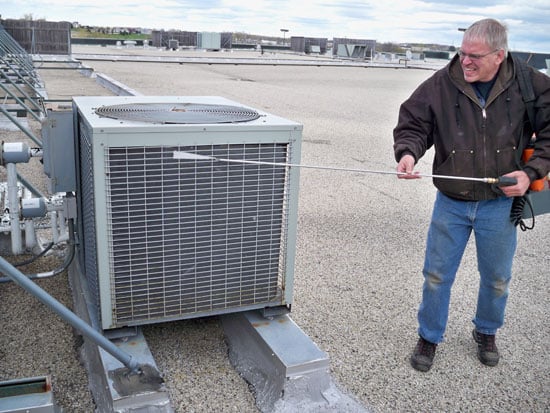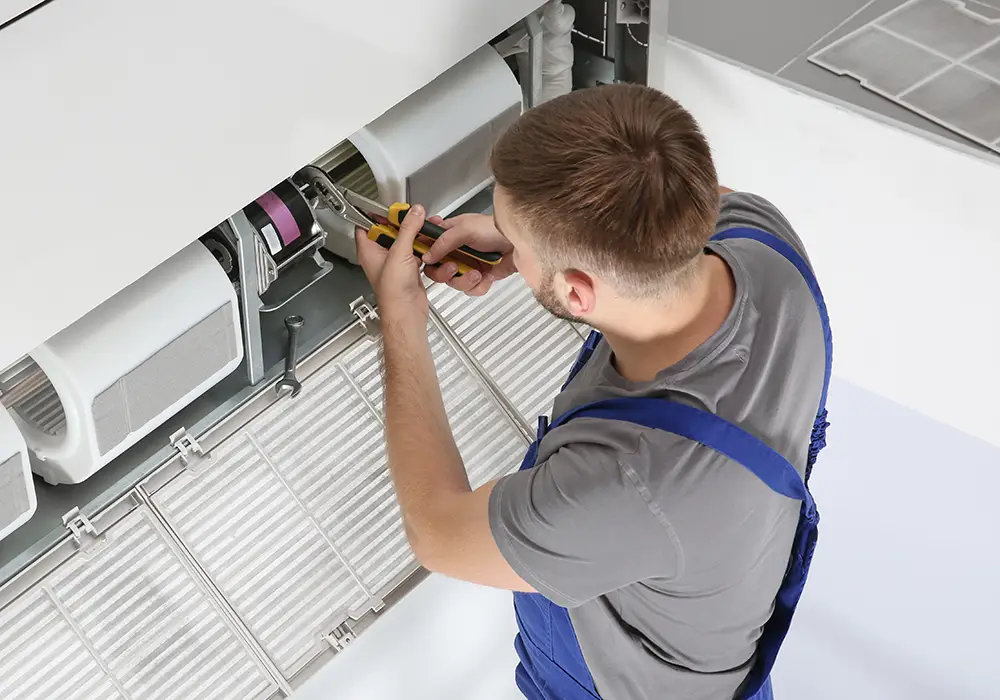Ensuring a healthy living environment is crucial for both homeowners and business owners. One significant concern that often arises is the presence of mold in HVAC systems. This issue not only affects air quality but can also lead to serious health concerns. In this article, we will explore comprehensive DIY tips to tackle and prevent mold in your HVAC system.

Understanding Mold in HVAC Systems
Mold is a type of fungus that thrives in moist environments. HVAC systems, with their intricate network of ducts and vents, can become breeding grounds for mold if not properly maintained. Understanding how mold forms and spreads in these systems is the first step in addressing the issue effectively.
The Importance of a Mold-Free HVAC System
A mold-free HVAC system ensures better air quality, reducing the risk of respiratory issues and allergies for occupants. Moreover, a clean system operates more efficiently, leading to lower energy bills and extended equipment lifespan. For more information on preventing odors and maintaining a clean system, check out these causes of odors and prevention tips.
Identifying Mold in Your HVAC System
Before you can tackle mold, you need to identify its presence. Keep an eye out for musty odors, visible mold growth around vents, and increased allergy symptoms among occupants. For a detailed guide on signs of musty duct smells, visit this informative resource.
Common Areas for Mold Growth
Mold commonly grows in areas with high humidity and moisture. In HVAC systems, this includes areas such as the drip pan, evaporator coils, and air ducts. Regular inspection of these areas is essential for early detection and prevention of mold growth.
DIY Tips for Removing Mold
Mold removal in HVAC systems can be a daunting task, but with the right tools and techniques, it can be manageable. Here are some DIY tips to help you get started:
1. Regular Inspection and Maintenance
Regular inspection of your HVAC system is crucial. Check for any signs of mold or moisture buildup and address issues promptly. Routine maintenance helps prevent mold from taking hold in the first place.
2. Clean and Replace Air Filters
Air filters play a vital role in trapping mold spores and other contaminants. Ensure that you clean or replace filters regularly to maintain optimal air quality and system performance.
3. Use Mold-Resistant Products
Consider using mold-resistant products, such as coatings or sealants, to protect vulnerable areas of your HVAC system. These products can help prevent mold growth by creating a barrier against moisture.
4. Control Humidity Levels
Maintaining proper humidity levels is essential in preventing mold growth. Use dehumidifiers if necessary and ensure proper ventilation to keep moisture levels in check.
When to Call a Professional
While DIY tips can be effective in managing mold, there are situations where professional intervention may be necessary. If mold growth is extensive or if you experience persistent issues, it is advisable to contact an HVAC professional for a thorough inspection and cleaning. For expert advice on fixing smelly vents, consider visiting this helpful guide.
Preventing Future Mold Growth
Prevention is always better than cure. Implementing proactive measures can help keep your HVAC system mold-free:
Regular Maintenance
Schedule regular maintenance checks with a professional to ensure your system remains in good condition. Regular cleaning and servicing can significantly reduce the risk of mold growth.
Invest in a High-Quality HVAC System
Consider investing in a high-quality HVAC system with advanced features such as humidity control and air purification. These systems are designed to maintain optimal air quality and prevent mold growth.
Educate Occupants
Educate occupants about the importance of maintaining a mold-free environment. Encourage them to report any signs of mold or odd odors promptly. For more insights on why your AC may smell musty, check out this external resource.

FAQs About Mold in HVAC Systems
1. Can mold in HVAC systems cause health issues?
Yes, mold can cause various health issues, including respiratory problems, allergies, and asthma. It is essential to address mold issues promptly to maintain a healthy living environment.
2. How often should I clean my HVAC system?
It is recommended to have your HVAC system cleaned and inspected at least once a year. However, if you notice signs of mold or experience poor air quality, more frequent cleaning may be necessary.
3. What are the signs of mold in HVAC systems?
Common signs include musty odors, visible mold growth around vents, and increased allergy symptoms among occupants. Regular inspection can help in early detection and prevention.
By following these DIY tips and taking proactive measures, homeowners and business owners can effectively manage mold in their HVAC systems, ensuring a healthier and more comfortable environment for all occupants.
This article contains affiliate links. We may earn a commission at no extra cost to you.